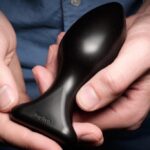
The Broad, Storied History of the Dildo
Since the dawn of mankind, humans have celebrated the pleasure and empowerment of sex and self-pleasure. The opulent, unique, and sometimes opulent history of the dildo is no exception. As one of the oldest forms of pleasure-seeking, the dildo has been with us since ancient times, captivating the imagination of cultures and individuals across time and geography. From ancient Greece to the modern day, the dildo has been used in more ways than one might expect. From the hottest Hollywood sex scenes to the ancient-Greco Roman eras, the dildo has managed to remain the center of attention and a symbol of sexual prowess through the ages. Explore the rich, fascinating, and perhaps surprising history of the dildo in this article.
1. Exploring the Origins of the Dildo
The dildo has been around since antiquity. Ancient Greek pottery depicted the use of penis-shaped objects during sex. From there, the dildo has a rich and varied history that spans many eras and cultures.
In Ancient Rome, dildos were made of wood, leather and stone. They were decorated to represent the gods and goddesses associated with fertility. They were also sometimes used as medical devices or for religious ceremonies.
During the Middle Ages, the dildo was a popular way for women to satisfy themselves. Many of them were made out of animal horn. This was still a socially accepted practice in some parts of Europe until the late 1800s.
The history of the dildo continues to evolve as new innovations are added. Today, dildos are typically made from silicone or rubber, and many feature vibrating and rotating capabilities.
In addition to material, size, and texture, there are several other factors to consider when buying a dildo. Here are a few key features to look out for:
- Color and design – do you want something discreet or eye-catching?
- Shape – does it curve in a certain way?
- Texture – does it have bumps, veins, or something unique?
- Size – is it realistic or oversized?
- Functionality – does it vibrate, rotate, or have other features?
The variety of materials, sizes, shapes, and functionality available means that there is a dildo for everyone. Whether it’s used for pleasure or a collector’s item, with such a rich and storied history, the dildo continues to be a favorite.

2. Common Misconceptions and Historical Facts
It’s easy to think of the dildo as a relatively new invention, but it’s actually been around for thousands of years. There are plenty of misconceptions about it, though, which this post seeks to clear up.
Here are some of the most common misconceptions about the dildo:
- Most people think that dildos are primarily used for sexual pleasure, but in fact many dildos have been used for medical and spiritual practice throughout history.
- It is also often assumed that dildos are a relatively recent invention. The truth is that dildos have a long history and they were used for a variety of purposes in ancient times.
- Dildos are seen as being remarkably similar to male genitalia, but there are actually a variety of shapes and sizes available.
Now, let’s look at some key historical facts about the dildo:
- The oldest known dildo was discovered in Hohle Fels Cave in Germany and dates back to around 30,000 BCE.
- In ancient Egypt, dildos were used to manage menstrual pain and were even made out of papyrus.
- The Romans also used dildos for pleasure and hygiene. They were often made of beeswax or sheep intestines.
- In the Middle Ages, dildos were seen as tools of evil and were the object of fear and suspicion.
- In the early modern period, dildos were mainly seen as medical tools and were used to treat a variety of ailments.
The dildo is a fascinating and surprisingly-old object with a complex history that is worthy of further exploration and debate.
Also, read: Exploring the World Of Dildos: A How-To Guide
3. Evolving Materials Used in Dildo Construction
In its long and storied history, the dildo has undergone numerous updates in material choice. Today, the range of materials used in the construction of a dildo is larger than ever before.
- Plastic is the most popular choice for construction. It’s easy to manufacture and offers impressive strength and durability.
- Silicone is used for Breathable and nonporous characteristics, as well as for its ability to retain heat.
- Metal offers compatibility with temperature play, and its natural strength makes it an ideal choice for heavier dildos.
- Glass is used for its wide range of colors, strong and durable structure, and its beauty.
- Wood is favored by many as a natural, sustainable material used for its strength and beauty.
- Ceramic is sought after for its strength and durability, and for its ability to retain heat.
These materials can be used alone or in combination with others to create a dildo with different properties. For example, a dildo made from a combination of metal and plastic can be made much heavier than one made from plastic alone. In addition, different materials can be combined to create a unique texture or feeling.
No matter the material combination you choose, there’s no doubt that a custom-made dildo can be an incredibly satisfying and enjoyable experience.

4. Modernization and Technological Advances
When thinking of the history of the dildo, it’s impossible to ignore the broad and varied history that pre-dates modern day. Far from a modern invention, dildos have existed in one form or another for thousands of years. While they may have changed shape and materials, the sex toy has largely retained its original purpose of being used as a tool for personal pleasure.
- Ancient Times: Dating back as far as 28,000 BCE, artifacts made of stone and other natural materials have been discovered. These items appeared to have been crafted to mimic male genitalia and are thought to be the first dildos.
- Renaissance Europe: In Renaissance Europe, they were known as ‘olaeb’, which meant ’egg’ in Hebrew. Between the 16th and 17th centuries, these items became a common object among the upper classes of Europe, often crafted from expensive materials. Ivory and tortoiseshell were common, and often they were decorated with jewels or precious gems.
- Modern: As technology advanced, so did the materials used to create dildos. What began as ivory and tortoiseshell has evolved into silicone, glass, and metal. Modern day dildos are far more technologically advanced and often come with features such as settings that can be controlled with an app, suction cups, and vibrators.
While the advancement in material and technology have enabled these toys to become more easily accessible and far more pleasurable for personal use, this cannot diminish the history behind the dildo. Its rich history is a testament to human curiosity and a reminder that sex toys have been around far longer than many may realize.
Today, the dildo is not a solely a tool for pleasure, but also a way of exploring relationships, sexuality, and freedom of expression.
Also, read: Hands-Free Sex Toys for Women: The Next Level of Pleasure
5. Finishing Up with the Future of Dildo Usage
So what does the future hold for the ever-transforming dildo? With new technological advances, creating new possibilities for use, materials, and shapes, the utilization of the classic sex toy is destined to continue to evolve.
Back in the day, users had to rely on the length and size of the dildo they bought in-store. Now with 3D printing, customization is possible and there are no limitations to the shape, size, and textures of the dildo.
New materials are always being experimented with and tried out for their optimal sensation when inside of the body. Some new materials that have been put out for the market include:
- Soft silicone – Waterproof, phthalates-free, safe material that absorbs heat quickly.
- Glass – Can be heated up or cooled down before use, non-porous and great for G-spot stimulation.
- Ceramic – Can provide a heated sensation inside the body.
- Steel – Non-porous, can be heated or cooled down for a unique experience.
- Jelly – Soft material often used for realistic-looking dildos.
Design-wise, realistic dildos are on the rise and with technological advancements, companies are able to better replicate more life-like experiences. For the more custom-minded crowd that are looking for unique shapes and abstract materials, these specific dildos can still be found, designed, and bought.
Vibration patterns on dildos are also increasingly more caught on, in order to really drive pleasure and excitement during playtime. There are many innovative designs that come with remote-controlled motions, ergonomic shapes, and unique patterns that can heighten the pleasure.
| Type | Benefits |
|---|---|
| Realistic | Enhanced pleasure |
| Vibrating | Heightened pleasure |
| Custom Made | Unique shape & size |
| Novel Materials | Unique sensations |
Overall the classing dildo is a timeless piece of pleasure that has always been relied upon for maximum erotic sensations. With the technology expanding and new materials being used, the future of this sex toy looks very exciting!
Q&A
1. What is the dildo?
The dildo is a sex toy, typically shaped to resemble a penis.
2. How long has the dildo been around?
The history of the dildo can be traced back thousands of years.
3. What materials are dildos made of?
Dildos can be made of a variety of materials, including glass, rubber, silicone, metal and even wood.
4. Are there different types of dildos?
Yes, dildos vary in size, shape, color and texture. There are vibrating, suction-cup and double-ended dildos, among others.
5. Is the dildo an ancient device?
Yes, archaeological evidence suggests dildos have been around since ancient times.
6. Are there any historical records of dildo-use?
Yes, the mechanics of using the dildo have been documented in 189 BCE.
7. How have dildos changed over time?
Dildos have been made from a variety of materials, but the design has stayed relatively similar throughout history.
8. What is the modern use of the dildo?
Nowadays, dildos are mainly used for sexual pleasure, either alone or with partners, and can come in a range of shapes and sizes.
9. Are there misconceptions about the dildo?
Yes, some people mistakenly think that dildos are only for same-sex couples or solo-use. In reality, anyone can use a dildo for whatever purpose they wish.
10. Is the dildo still popular today?
Yes, the dildo remains a popular sex toy, and is now available in a wide variety of shapes, sizes, and materials. From its Ancient Greek origins to modern day silicon creations, the dildo’s incredible story is something that still captures the hearts and imaginations of thousands today. As a symbol of sexual exploration, power and pleasure, the dildo continues to bring joy and fun to those who choose to use it, and, as its history tells us, this has been the case for thousands of years. Long may it continue!






